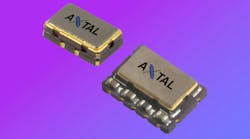This article is part of the TechXchanges: It's About Time and Defense Electronics.
The Overview
Q-Tech’s New Space Series of temperature-compensated crystal oscillators (TCXOs) are optimized for low-Earth-orbit (LEO) satellite timing and frequency-generation tasks. The devices offer low phase noise, high-frequency stability, and radiation hardness in two small package sizes.
Who Needs It & Why?
There are no second chances to get a LEO satellite designed correctly once it’s deployed. Thus, components intended for such applications require a high level of performance; optimization for size, weight, and power (SWaP); and extreme levels of radiation hardness. Q-Tech’s New Space Series of TCXOs, designed by the company’s German affiliate, AXTAL, fit the bill for these mission-critical applications in LEOs.
Under the Hood
Built with a modern TCXO IC, the devices exhibit low phase noise and high-frequency stability and are fully TID and SEE radiation tested. They're offered in two hermetically sealed, small-footprint, surface-mounted ceramic packages: AXLE5032S (5 × 3.2 mm) and AXLE7050S (7 × 5 mm). The TCXOs can be tested and screened to specific customer requirements; swept crystal versions are available.
Key features of the New Space Series are radiation tolerance to 50 kRad(Si) TID and single-event latch-up (SEL) immunity (tested up to 120 MeV-cm2/mg). They provide selectable frequency stability (±1 to ±3 ppm) and a phase-noise floor of –160 dBc/Hz (at ≥100-kHz offset).
